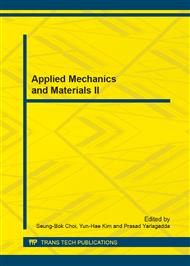p.640
p.646
p.651
p.655
p.660
p.666
p.671
p.675
p.681
Theoretical and Experimental Research on Joint Slippage Effects of Lattice Angle Steel Tower
Abstract:
In lattice angle steel transmission tower, as the bolt diameter is small and member connection is relatively thin, lower clamping force is commonly used in bolted joint. It is common in lattice tower during full tower tests, joint slippage occur even under design load. However, traditionally trussed beam hybrid finite element model without explicitly considering slippage effects has been widely used in the analysis of the tower. In this paper, the HD-1 tower was experimentally studied under various static load cases, and several numerical models with including joint eccentricity and slippage are established. After comparing the theoretical analysis results and the experimental results, the following conclusions are presented: joint eccentricity almost has not effects on leg member axial force; Among all the studied load cases, joint slippage effects the leg member force most under torsional condition than the other load conditions; Numerical model with including joint slippage effects yield much better axial force results in leg member compared with experimental test results.
Info:
Periodical:
Pages:
660-665
Citation:
Online since:
December 2013
Authors:
Price:
Сopyright:
© 2014 Trans Tech Publications Ltd. All Rights Reserved
Share:
Citation:


